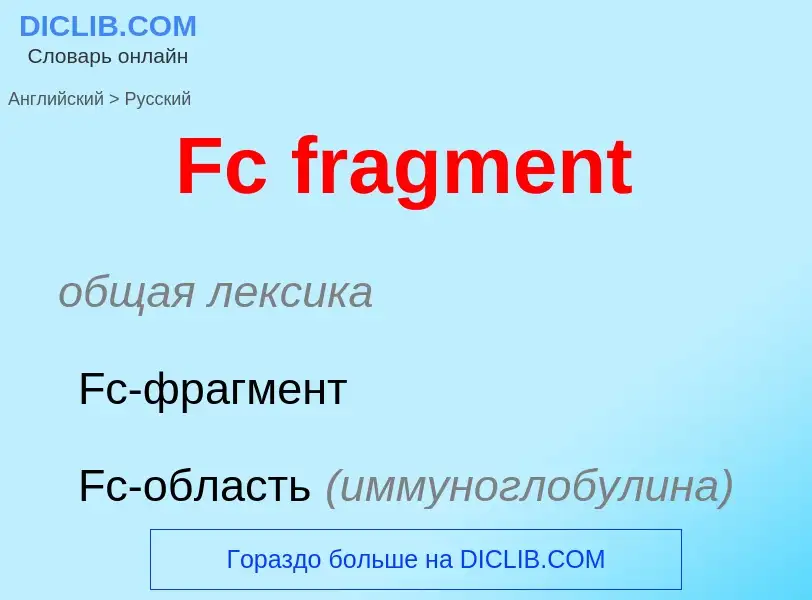Перевод и анализ слов искусственным интеллектом ChatGPT
На этой странице Вы можете получить подробный анализ слова или словосочетания, произведенный с помощью лучшей на сегодняшний день технологии искусственного интеллекта:
- как употребляется слово
- частота употребления
- используется оно чаще в устной или письменной речи
- варианты перевода слова
- примеры употребления (несколько фраз с переводом)
- этимология
Fc fragment - перевод на Английский
общая лексика
Fc-фрагмент
Fc-область (иммуноглобулина)
общая лексика
антисвязывающий домен
Fab-фрагмент
Fab-область (антитела)
Определение
Википедия
The fragment crystallizable region (Fc region) is the tail region of an antibody that interacts with cell surface receptors called Fc receptors and some proteins of the complement system. This property allows antibodies to activate the immune system. In IgG, IgA and IgD antibody isotypes, the Fc region is composed of two identical protein fragments, derived from the second and third constant domains of the antibody's two heavy chains; IgM and IgE Fc regions contain three heavy chain constant domains (CH domains 2–4) in each polypeptide chain. The Fc regions of IgGs bear a highly conserved N-glycosylation site. Glycosylation of the Fc fragment is essential for Fc receptor-mediated activity. The N-glycans attached to this site are predominantly core-fucosylated diantennary structures of the complex type. In addition, small amounts of these N-glycans also bear bisecting GlcNAc and α-2,6 linked sialic acid residues.
The other part of an antibody, called the Fab region, contains variable sections that define the specific target that the antibody can bind. By contrast, the Fc region of all antibodies in a class are the same for each species; they are constant rather than variable. The Fc region is, therefore, sometimes incorrectly termed the "fragment constant region".
Fc binds to various cell receptors and complement proteins. In this way, it mediates different physiological effects of antibodies (detection of opsonized particles; cell lysis; degranulation of mast cells, basophils, and eosinophils; and other processes).

![F(ab')<sub>2</sub> fragment]] and a pFc' fragment F(ab')<sub>2</sub> fragment]] and a pFc' fragment](https://commons.wikimedia.org/wiki/Special:FilePath/F ab2 pFc.png?width=200)


